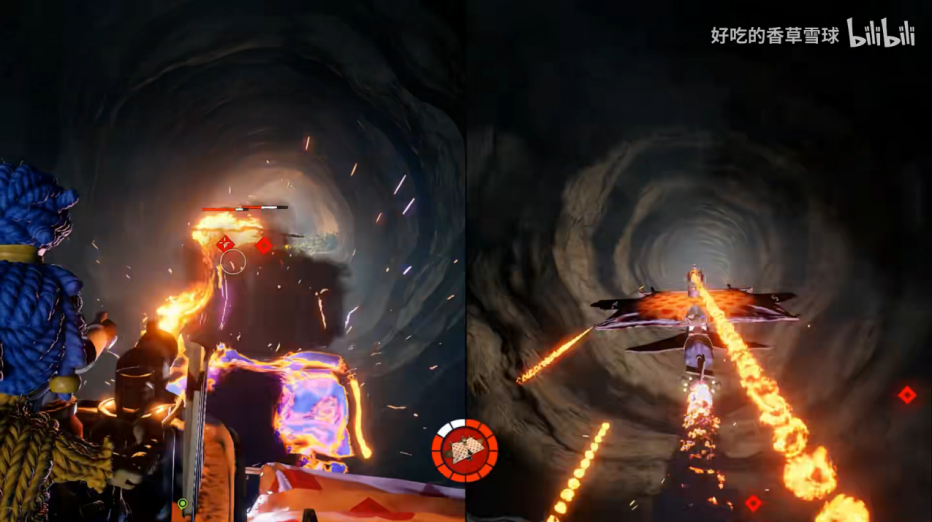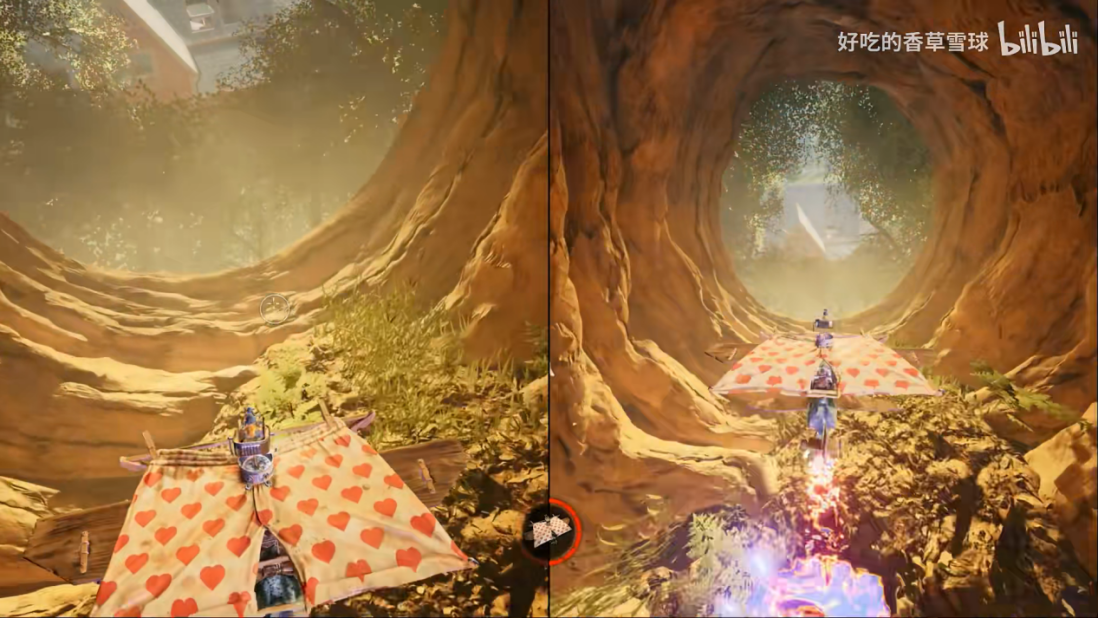1. Introduction
Adventure game (AVG) is a very broad type of game, mainly divided into text adventure games (TAVG), action adventure games (AAVG) two categories. At the heart of adventure games is the element of "exploration", where players usually have to complete missions and solve puzzles in order to achieve the goals of the game. Famous action adventure games include "The Legend of Zelda", "Resident Evil" and "Tomb Raider". This paper will mainly discuss and analyze the level design of action-adventure games, because the level design is one of the most important elements of action-adventure games, whether the level design is clever enough will determine the final quality of the entire action-adventure game. After 65 years of rapid development in the electronic game industry, many game designers have summed up the skills of game level design. This paper will analyze and discuss some of these skills and mechanisms through literature analysis and case analysis, hoping to bring reference value to future game designers and researchers.
2. Game Mechanics and Gameplay Design
2.1. The Basic Elements of a Game Level
A game level is mainly composed of five basic elements: terrain, obstacles, items, plot, and objectives[1].
The architectural ornaments, boundaries and landforms in the level are called the terrain, and the terrain provides the most basic site for the level. Terrain not only plays a role in defining the scope of the level, but also assumes the role of creating a comfortable visual effect for the player. That is to say, the design of the terrain should be considered from many aspects such as composition, architecture and aesthetics[2].
Obstacles can be any game object that prevents the player from achieving the goals of the level, such as enemies, dangerous terrain, and time constraints. Cleverly placed obstacles can keep the tempo of the level within an appropriate range. For example, when the developer wants to create a tense atmosphere for the player, he can increase the tension of the level by increasing the frequency of obstacles and extending the time they appear. Items are a way for the player to fight against obstacles, such as weapons, skills, or resources. Developers need to adjust the value of items and obstacles to balance the difficulty of the level and enhance the player's game experience.
Plot and objectives are often closely related. For example, Lara Croft, the main character in "Tomb Raider", is an archaeologist, but when she enters an ancient tomb, her goal is to explore the tomb until she finds the treasures deep inside. In this example, Lara as an archaeologist enters a tomb to find treasure in the plot, and reaching the deepest part of the tomb is the goal of the level, so the plot usually determines the goal of the level.
2.2. Innovation in Gameplay Design
Use imagination when designing gameplay, and a game needs to have at least one or two innovations to make it unique and not just old wine in a new bottle. Innovation doesn't have to be a completely new gameplay mechanic, it can be a new way to combine two or more game mechanics. Overall, innovation in gameplay should be made from two perspectives: functionality and gameplay[3].
Functional innovation is usually from the perspective of convenience, and is designed for the purpose of making the player's game experience more complete and the game operation more convenient. For example, "Age of Empires", as one of the earliest games to use visual game minimaps, is from the player's point of view, in order to allow players to clearly understand the overview of the entire game world at any time during play, and gives the visual minimap this innovation, and this element is also widely used in later adventure games.
Gameplay innovation is often designed to keep the player feeling fresh and exciting. For example, "The Legend of Zelda", is widely considered to be the first game in the history of gaming to create a treasure chest mechanic, when the player opens the treasure chest in the dungeon and gets a weapon or item, there is enough of a sense of accomplishment, so that the process of finding the treasure chest is constantly fresh and interesting to the player to keep playing. This mechanic has become a common feature of many adventure games.
3. Game Level Design and Guidance
3.1. Game Guidance Design
Game guidance plays a crucial role in a game, and it largely determines the retention rate of a game's players. If the guide is not clear, then the player will not know the goal of the game and will not know what to do next, resulting in a very poor game experience for the player. Game guidance should be a combination of story, setting, and user interface (UI)[4]. The story should provide the player with a reasonable reason to achieve the game's goals, and strengthen the player's motivation to achieve the game's goals. The scene should intentionally guide the player visually by highlighting key items and de-emphasizing the rest. The UI, on the other hand, should constantly remind the player of the goal of the game or how to play it. The most common is to display the current game mission on the edge of the screen, and to place the game's instructions in the game Settings. However, if the game guide is too complicated and lengthy, it can also easily lead to the rapid withdrawal of player interest. Therefore, how integrating the game guide into the game, so as to be both interesting and concise is the key to game design.
3.2. A Way to Engage the Player in the Context of the Game
The key to engaging the player in the context of a game is immersion, and story, character design, music design, and art style are the four main factors that create overall immersion in a game.
Game story design includes world view and plot. The world view of the game must be complete and consistent, and the plot of the game must be consistent with the world view of the game, to ensure that the plot is logical and reasonable under the world view. And the story of the game should be fascinating, with ups and downs, and timely insertion of the climax of the story, so that the player's emotions follow the story, so that the player can be more involved in the sense. After all, for an action-adventure game, if the story is too bland, it will only be detrimental to keeping the player fresh and motivated. The role of the game includes the main role and the secondary role, the words and actions of each role must be in line with the character of the role, in line with the behavior logic and in line with the world view, the overall unity of the role can be regarded as a successful role.
Background music and game sound effects are one of the important ways to create the overall atmosphere of the game. When the game enters a tense stage, such as when the player enters a battle or enters a chase war, the background music is usually chosen to create a tense atmosphere. Some games also add a countdown tick to the chase, or adjust the character's heartbeat with the distance between the chaser and the player, thereby putting pressure on the player and attracting all the player's attention to the game. When the game enters a more relaxed environment, such as when the player enters the base camp or returns home, the background music is usually soothing and peaceful, and some games will add some vague bird songs and chatting sounds in the background to create a relaxed and peaceful atmosphere[5].
The art style of the game, including scene architecture, character modeling and UI design, must be consistent, otherwise, the visual effect of the entire game is fragmented and fragmented, and the player's immersion will be nowhere to be found. It's also important to choose an art style that fits the genre and worldview of the game. For example, choosing a cute, fresh cartoon art style for a hardcore gunfight game is obviously inappropriate. However, there are some developers who are very good at using art styles that are very different from their game style to "trick" the game player, so that when the player discovers a completely unexpected story or gameplay, it will be surprised and shocked by the great contrast. For example, the game "Home" in its warm and lovely pixel painting style, hides a sad and terrible plot. Even if a lot of players are "deceived", it does not prevent it from being a good action adventure game.
3.3. Principles and Techniques of Game Level Design
The article "A Brief Analysis of Action Adventure Game Level Design" summarizes the principles of game level design as balance, frame rate, rhythm, unity, challenge, and game detail[1]. The following will take the last level at the end of Chapter 2 of "It Takes Two" as an example to analyze the above principles applied to it. In the chosen level, one player is responsible for controlling the plane, and the other player is responsible for shooting the bees that follow the player, as shown in Figure 1, and the goal of the level is to escape from the tree.

Figure 1: Screenshot of the game at the beginning of the example level
The first is balance, which means that through the designer's reasonable arrangement of game elements, the player's attention is consciously focused on the center of the visual area. In this level, the point of view of the player controlling the plane is centered on the plane itself, while in the point of view of the other player shooting, most of the enemies appear from the very center of the point of view. From a visual point of view, the parts of the two players' perspectives except for the central area are dim, and only the central area of the perspective is highlighted, so the player will naturally concentrate on the visual center at the center of the screen.
The proper frame rate is a basic requirement for the player to be able to play the game properly, so developers must consider the optimization of the game, such as the use of low-precision maps and models for objects that the player cannot see up close to ensure the frame rate. For example, the accuracy of the protagonist model in the case level is significantly higher than that of distant enemies or decorative objects in the scene.
The control of the sense of rhythm is also perfect, the level from time to time through the dialogue voice of the protagonists, the entrance door gradually began to close and other ways to emphasize the sense of urgency of time to the player, and the background music is also selected compact and exciting accompaniment, the thrilling atmosphere of the whole level is very successful.
Unity means that the individual elements of a level -- models, vegetation, surfaces, etc. -- should maintain a unified visual style. In the case level, whether it is the modeling of the protagonist's enemies or the model of the scene, the overall style is partial to the cartoon, achieving a high degree of visual unity.
From a psychological point of view, when the player can experience the feeling of overcoming difficulties and challenging themselves, the game will feel fun[6]. The game should allow the player to feel a sense of frustration or accomplishment from the puzzles and obstacles set up in the game, and follow the principle of easy first, then difficult, so that the player can feel that they are growing. Challenge is therefore one of the principles that must be observed in level design. In the case level, one player must control the plane to avoid obstacles at all times, while the other player must constantly shoot enemies, which is an extremely challenging design, so the player can also gain a great sense of accomplishment at the end of the level. At the same time, the number of enemies and obstacles, the degree of roughness of the road will increase with the progress of the level, so as to achieve the process of increasing the difficulty of the level from easy to difficult.
Game details can make the game more realistic and bring visual enjoyment to the player. The example level, in which the player's light is constantly adjusted to the player's progress through the tree trunk and the distance from the exit, affects the player's visibility, is a good example of the game's detail principle. As people can see from the screenshot of the game at the end of the level(see Figure 2), the overall brightness of the game screen is very different from the brightness at the beginning of the level.

Figure 2: Screenshot of the game at the end of the example level
4. Conclusion
This paper analyzes and discusses the level design skills of action adventure games from five perspectives: the basic elements of game levels, the innovation of gameplay design, game guide design, the creation of game immersion and the principles of level design. Good game level design is very skillful and comprehensive, so the game developers must think more and more to make the player feel the fun of the game. This paper is only a general discussion of each of the important elements of game design, there are still a lot of techniques that can be discussed for each of them.



